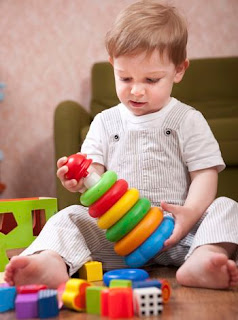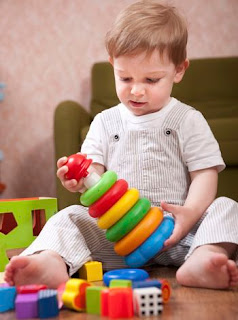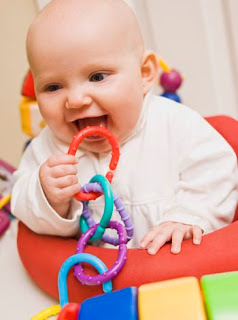Toys. Their effects on social development and emotional development of children
Toys are essential tools for good child development. Plays an important role in the formation of concepts, skills, expectations and socialization in children.
Historically, children have the need for activity; To move, look around, manipulate objects and experiment, create, interact, and exchange activities, experiences and feelings.
Historically, children have the need for activity; To move, look around, manipulate objects and experiment, create, interact, and exchange activities, experiences and feelings.
The right toy
The game, as well as being an activity helps children develop their mental functions, physical and social. Children develop the many facets of his personality: learn to interact with the environment, develop its most creative and refine their multiple skills helping to channel vital energy both physical and mental and emotional.
This is helpful in their development as whole persons, facilitating their integration into the social environment in which they move. It is for this reason it is essential to find the toy appropriate for each age and time, And be very aware of the role it will have on child development.
This is helpful in their development as whole persons, facilitating their integration into the social environment in which they move. It is for this reason it is essential to find the toy appropriate for each age and time, And be very aware of the role it will have on child development.
The game changes as the child grows. Soon the child will be representing characters and can express themselves and communicate freely; also establish rules in games, exercising their ability to self-control and autonomy.
Toys. Choosing toys as the child's age
In the market, the supply of toys is so great and varied that it is very difficult to choose the most appropriate or the best. What to consider when choosing a toy for a child? this blog has prepared some tips and suggestions for parents to aim at when choosing and buying toys for children.
Tips for choosing toys
1. The toy should be desired by the child.
2. Be insurance. Must be constructed with materials that will not chip or break if you are cutting. Colors have to be solid and nontoxic. The smaller the child should be larger toys.
3. We buy age-appropriate thinking, always in order and attitudes that develop in our children.
4.Tengamos into account their personality, a child retracted need socializing games (Multiplayer) a child hyperactive will seem appropriate care games, art, etc ...
5. Make it simple. This would increase the range of applications that can make it, developing their imagination and symbolic capacity.
6. Do not buy to satisfy a momentary whim of the child.
7. Generally should not be used to reward or punish a child.
8. We should note that excess kills the fantasy toys and produces boredom. Children need to ask first.
9. Should instruct the family to give away toys not indiscriminately.
10. The best toy is not necessarily the most expensive.
In the market, the supply of toys is so great and varied that it is very difficult to choose the most appropriate or the best. What to consider when choosing a toy for a child? this blog has prepared some tips and suggestions for parents to aim at when choosing and buying toys for children.
Tips for choosing toys
1. The toy should be desired by the child.
2. Be insurance. Must be constructed with materials that will not chip or break if you are cutting. Colors have to be solid and nontoxic. The smaller the child should be larger toys.
3. We buy age-appropriate thinking, always in order and attitudes that develop in our children.
4.Tengamos into account their personality, a child retracted need socializing games (Multiplayer) a child hyperactive will seem appropriate care games, art, etc ...
5. Make it simple. This would increase the range of applications that can make it, developing their imagination and symbolic capacity.
6. Do not buy to satisfy a momentary whim of the child.
7. Generally should not be used to reward or punish a child.
8. We should note that excess kills the fantasy toys and produces boredom. Children need to ask first.
9. Should instruct the family to give away toys not indiscriminately.
10. The best toy is not necessarily the most expensive.
Toys for children ages
0-6 MONTHS: Need toys to help you discover your body and to distinguish different textures, shapes and colors. The rattles, crib mobiles, rubber toys, teething rings, rugs with activities, etc.
7-12 MONTHS: The baby begins to explore objects and recognize voices. Balls, Rag dolls, toys, audio, tentetiesos, rockers and walkers.
13-18 MONTHS: Children know how to walk and recognize the properties of objects. The fit and stack bins, wheeled bicycles and strollers.
7-12 MONTHS: The baby begins to explore objects and recognize voices. Balls, Rag dolls, toys, audio, tentetiesos, rockers and walkers.
13-18 MONTHS: Children know how to walk and recognize the properties of objects. The fit and stack bins, wheeled bicycles and strollers.
19-24 MONTHS: The child speak and understand, begins to discover its environment. Cars, bicycles, boards, paintings, musical instruments, dolls and animals.
2-3 YEARS: They begin to be curious about the names and imitate familiar scenes. Tricycles, shovels, buckets, Puzzles, paints, telephones, and dolls.
3-5 YEARS: The child begin to ask, learn songs and play with his/her friends. Bikes, boards, tape, stories, puppets and action figures.
6-8 years: The child knows how to add and subtract, read and write. Skateboards, remote control cars, games, manuals, questions and experiments.
9-11 YEARS: They are interested in complicated activities. Sports supplements, strategy games and reflection, audiovisual, and electronic experiments.
MORE THAN 12 YEARS: Playfulness disappear and are building their own identity. Books, music and video games.
2-3 YEARS: They begin to be curious about the names and imitate familiar scenes. Tricycles, shovels, buckets, Puzzles, paints, telephones, and dolls.
3-5 YEARS: The child begin to ask, learn songs and play with his/her friends. Bikes, boards, tape, stories, puppets and action figures.
6-8 years: The child knows how to add and subtract, read and write. Skateboards, remote control cars, games, manuals, questions and experiments.
9-11 YEARS: They are interested in complicated activities. Sports supplements, strategy games and reflection, audiovisual, and electronic experiments.
MORE THAN 12 YEARS: Playfulness disappear and are building their own identity. Books, music and video games.
Recommended toys. The best and worst toys based on age of children and babies
Do you have to buy a gift for a boy or a girl and do not know what to get? Depending on their age and need, we present a list of toys Classified among those recommended for ages and recently recommended by its characteristics, so that it easier to find the most appropriate toy for the baby.
Do you have to buy a gift for a boy or a girl and do not know what to get? Depending on their age and need, we present a list of toys Classified among those recommended for ages and recently recommended by its characteristics, so that it easier to find the most appropriate toy for the baby.
The best toys recommended
Toys for 0 to 1 year
- Toys that stimulate the senses: Colors, textures and sounds different.
- Toys that encourage movement: Easy to grab, crawl promoters ...
- Toys that encourage affectivity: Stuffed animals, dolls ...
Toys for 0 to 1 year
- Toys that stimulate the senses: Colors, textures and sounds different.
- Toys that encourage movement: Easy to grab, crawl promoters ...
- Toys that encourage affectivity: Stuffed animals, dolls ...
Toys for 1 to 2 years
- Toys that invite to tour the space: Walkers, Run-halls, foam rubber blocks ...
- Toys that connect facts: cause and effect, hitting, throwing, load and unload, stack and towers, experiment with water and earth.
- Toys that encourage imitation simple actions: small animals and dolls, puppets, telephones, cars ...
Toys for children 2 to 6 years
- Toys for open: Tricycle, balls, rope, buckets, shovels, sieves ...
- To build, fit and improve their manual dexterity.
- To imitate family and professional scenes: dolls and accessories, kitchenette, gadgets, shopping, medical equipment, etc.
Toys for 6 to 10 years
- Toys for Outdoor Activities: skate, bike, board games and simple strategy.
- Construction Different types of bricks, rods, three dimensional, etc.
- Toys for experimentation and research environment.
- To mimic fantastic scenes: spies, heroes of comics, movies or television, etc..
- Toys that invite to tour the space: Walkers, Run-halls, foam rubber blocks ...
- Toys that connect facts: cause and effect, hitting, throwing, load and unload, stack and towers, experiment with water and earth.
- Toys that encourage imitation simple actions: small animals and dolls, puppets, telephones, cars ...
Toys for children 2 to 6 years
- Toys for open: Tricycle, balls, rope, buckets, shovels, sieves ...
- To build, fit and improve their manual dexterity.
- To imitate family and professional scenes: dolls and accessories, kitchenette, gadgets, shopping, medical equipment, etc.
Toys for 6 to 10 years
- Toys for Outdoor Activities: skate, bike, board games and simple strategy.
- Construction Different types of bricks, rods, three dimensional, etc.
- Toys for experimentation and research environment.
- To mimic fantastic scenes: spies, heroes of comics, movies or television, etc..
Toys undesirable
How can we recognize those toys that are not recommended for children? They have the following characteristics:
- Toys that do not meet safety basic checks bearing the seal of the EEC, which will not chip, do not emit colors, etc.. and, where appropriate, indicating "suitable for children under 36 months."
- Those who directly incite to violence, the practice of unhealthy habits, discrimination because of race, culture, gender, etc..
- Those that are impractical: difficult to save, they need constant turnover, the loss of a part are rendered useless, and so on.
- Inadequate for children for whom they are intended: not responding to their interests or tastes, age, or play possibilities offered by the place where he lives.
How can we recognize those toys that are not recommended for children? They have the following characteristics:
- Toys that do not meet safety basic checks bearing the seal of the EEC, which will not chip, do not emit colors, etc.. and, where appropriate, indicating "suitable for children under 36 months."
- Those who directly incite to violence, the practice of unhealthy habits, discrimination because of race, culture, gender, etc..
- Those that are impractical: difficult to save, they need constant turnover, the loss of a part are rendered useless, and so on.
- Inadequate for children for whom they are intended: not responding to their interests or tastes, age, or play possibilities offered by the place where he lives.
If this article was useful and you want to help us to grow Subscribing to our feed or Click "Like" in our Facebook page ,or follow us via Twitter or subscribing to our feed.
















0 comments:
Post a Comment